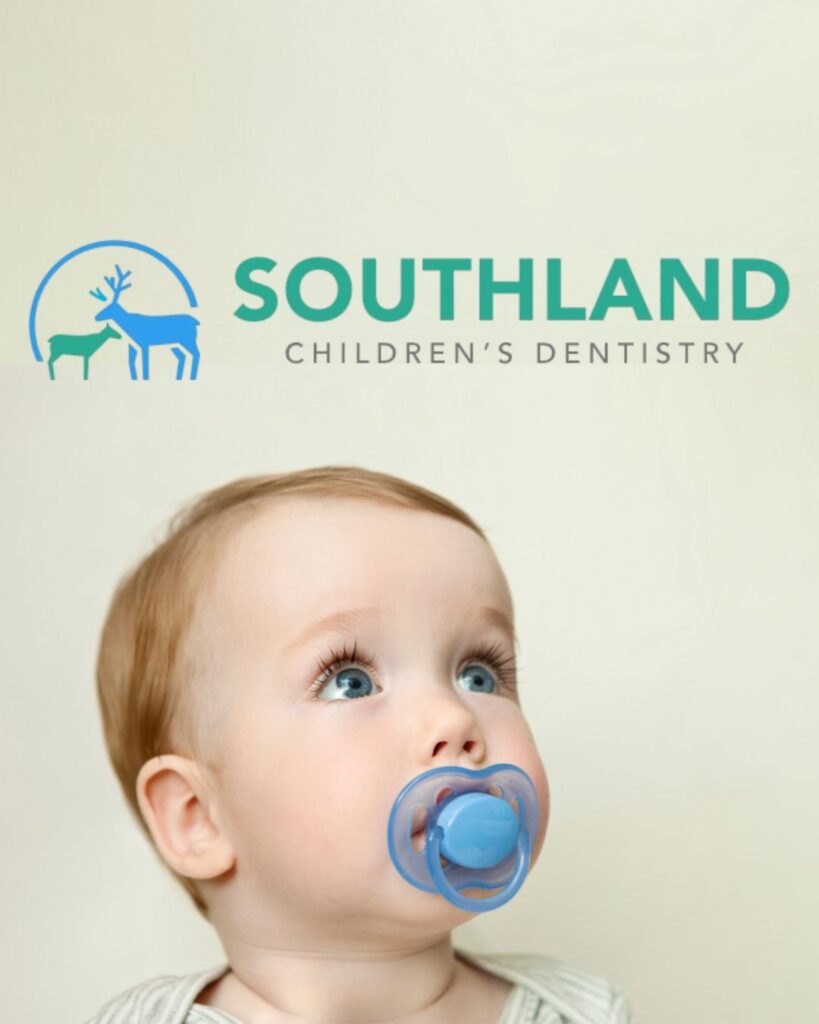Pacifiers & Your Child’s Smile: What Every Parent Should Know
As pediatric dentists, we often get questions about pacifiers. They’re a popular comfort tool for babies, and let’s be honest—they can be lifesavers for parents during those fussy moments! While pacifiers can be helpful, using the wrong one—or using it for too long—can negatively impact your child’s developing teeth and jaws.
Let’s break down the pros and cons of pacifiers, which ones are dentist-approved, and how to wean your child off them at the right time.
✅ The Benefits of Pacifiers (When Used Wisely)
Pacifiers serve several healthy purposes during infancy:
- They help soothe babies and promote self-soothing skills
- They can help babies fall asleep more easily
- Studies suggest pacifier use during naps and bedtime may reduce the risk of SIDS (Sudden Infant Death Syndrome)
In those early months, pacifiers can be a helpful tool for both babies and parents. But, like most things, moderation and timing are key.
🚫 The Risks of Prolonged Pacifier Use
After the age of 2, consistent pacifier use begins to pose risks for your child’s developing mouth and teeth. If used past age 3, problems may become more permanent or require orthodontic intervention.
Here are some of the most common issues we see:
- Open bite: A gap between the top and bottom front teeth that remains when the mouth is closed
- Crossbite: The top teeth fit inside the bottom teeth instead of outside
- Changes in palate shape, which can affect how the upper jaw grows
- Speech delays or challenges forming certain sounds
That’s why it’s important to start weaning well before these issues become established.
🏆 The Best Pacifiers for Oral Development
When shopping for a pacifier, focus on features that support natural oral development:
- Orthodontic nipple design: A flat bottom and rounded top support the natural shape of a baby’s tongue and jaw
- Single-piece construction: Safer and easier to clean, with fewer places for germs to hide
- Soft silicone material: Durable, non-toxic, and gentle on gums
Here are a few of Dr. Sellers & Dr. Fields top recommendations:
- Philips Avent Soothie – Often used in hospitals, soft, safe, and simple.
- MAM Orthodontic Pacifier – Developed with dental experts; orthodontic nipple and a breathable shield.
- NUK Orthodontic Pacifier – Asymmetrical shape that promotes healthy tongue placement.
- Tommee Tippee Closer to Nature Pacifier – Mimics the feel of breastfeeding with an orthodontic shape.
- BIBS Supreme – A trendy, lightweight option with orthodontic-friendly designs.
⚠️ Pacifiers to Avoid
Some pacifiers may look cute but aren’t designed with dental development in mind. Avoid:
- Bulbous or rounded nipple shapes that put pressure on the front teeth
- Multi-piece pacifiers that can break apart or harbor bacteria
- Cheap or novelty pacifiers with decorations or gimmicks that don’t support oral health
Look for trusted brands with safety certifications, and always replace pacifiers that show signs of wear.
⏰ When & How to Wean Your Child from a Pacifier
Dr. Fields & Dr. Sellers recommend beginning the weaning process around 18–24 months, with complete removal by age 3. Earlier weaning reduces the risk of developing dental problems and makes the process less emotionally challenging.
Weaning Tips:
- Start by limiting pacifier use to sleep times only
- Offer other sources of comfort like a soft blanket or stuffed animal
- Introduce a reward system—sticker charts, small prizes, or extra bedtime stories
- Try the “Pacifier Fairy” method: trade pacifiers for a special toy or gift
- Be patient—every child is different, and gradual weaning is usually more successful
👶 Supporting Healthy Smiles from the Start
Pacifiers can be helpful in your child’s early months, but choosing the right one—and knowing when to say goodbye—is key to preventing dental issues. As always, if you’re unsure whether your child’s pacifier is affecting their teeth, Southland Children’s Dentistry is here to help.
Don’t just take our word for it – the AAPD ( American Academy of Pediatric Dentists) also has some great info on the subject > https://www.mychildrensteeth.org/pacifier-use-and-thumb-sucking/
Let’s work together to keep those little smiles healthy and bright! To learn more about our practice click here https://www.southlandkids.com/dental-services/restorative-treatment/dental-cleanings/



